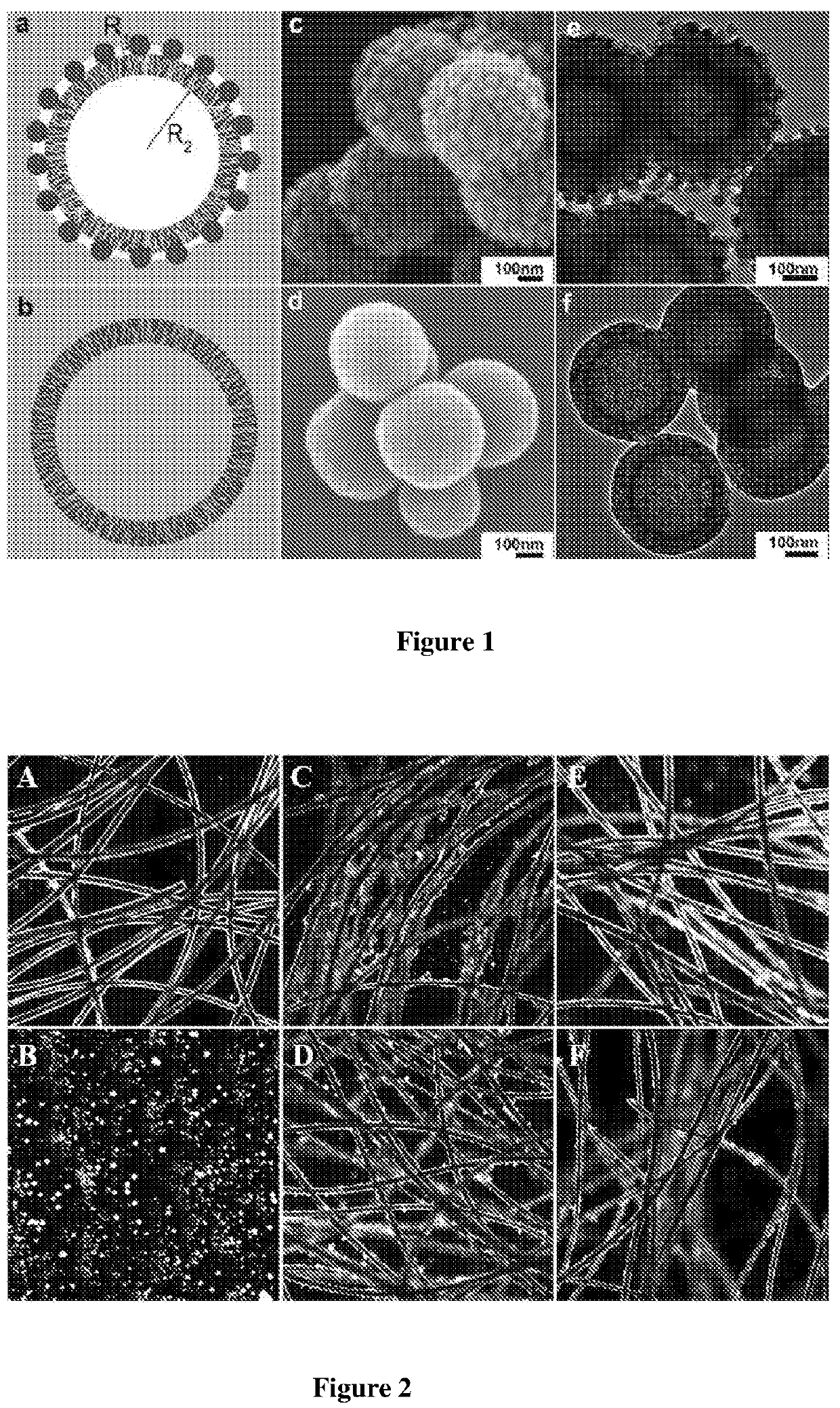Composition, particulate materials and methods for making particulate materials
a technology of particulate materials and organic compounds, applied in the field of organic compounds, can solve the problems of high cost of ectoparasite treatment, millions of dollars in losses, and serious threat to the industry of arthropod pests, and achieve the effects of increasing the solubility of hydrophobic essential oils, and reducing the cost of essential oil treatmen
- Summary
- Abstract
- Description
- Claims
- Application Information
AI Technical Summary
Benefits of technology
Problems solved by technology
Method used
Image
Examples
example 1
Development of a Nano-Pesticide with Improved Safety and Performance.
[0107]Ticks and buffalo fly cause over $400 million / year in economic losses to the Australian livestock industry and are currently treated with highly toxic synthetic pesticides. Spinosad, a naturally derived pesticide with low environmental impact and low toxicity will be loaded into silica hollow spheres which will improve adhesion to skin / hair and protect against UV degradation. The nano-spinosad pesticide will have enhanced efficacy and effective duration in field conditions compared to conventional pesticides, significantly reducing the cost of pest control.
[0108]Spinosad was supplied by the Elanco Animal Health. Mesoporous silica hollow spheres with a rough surface (MSHSs-RS) and a smooth surface (MSHSs-SS) were synthesized in Yu Group in Australian Institute for Bioengineering and Nanotechnology, University of Queensland. Kangaroo skin samples with fur were purchased from Skinny Shop, Australia as an animal ...
example 2
SHS-RS
[0126]This example describes an embodiment of the method of the third aspect of the invention for forming MSHS-RS nanoparticles.
[0127]The procedures for controlled synthesis of monodispersed rough silica hollow spheres are schematically illustrated in FIG. 9. In a typical Stöber synthesis condition, resorcinol (0.15 g) and formaldehyde (0.21 mL) were added into a basic solution with 70 mL of ethanol, 10 mL of water and 3 mL of ammonia (28 wt %) with a pH about 11.5 to form resorcinol-formaldehyde (RF) nanospheres at room temperature with a diameter of 180 nm after 6 h of polymerization. These RF nanospheres will form a sacrificial particle that will be eventually removed. Then, a certain amount of tetraethyl orthosilicate (TEOS) was added into the reaction solution, followed by another addition of resorcinol and formaldehyde 5 minutes later in Step II. Due to the difference between silica and RF deposition rates in Step II, a triple-layered shell was formed on the preformed RF...
example 3
Systems for Use in Biological Systems
[0133]In biological systems, hydrophobic interactions are usually considered to be the strongest of all long-range non-covalent interactions. Hydrophobic interaction is beneficial for adsorption of biomolecules, improving interaction with cellular membranes increasing the uptake of nanoparticles for cellular delivery as well as tailoring the release rate of drugs. To generate nanoparticles with hydrophobic properties, the choices of hydrophobic composition or functionalization are among the convenient approaches. Hydrophobic material such as carbon nanotubes (CNTs) have shown great promise as nanoscaled vehicles for drug delivery, however one of the main concerns is the fact that CNTs could be hazardous to environment and human health which need further surface functionalization to reduce their intrinsic toxicity. Hydrophobic moieties such as alkanethiols and alkyl chains have been modified onto the surfaces of various nanoparticles including gol...
PUM
| Property | Measurement | Unit |
|---|---|---|
| size | aaaaa | aaaaa |
| lengths | aaaaa | aaaaa |
| length | aaaaa | aaaaa |
Abstract
Description
Claims
Application Information
 Login to View More
Login to View More - R&D
- Intellectual Property
- Life Sciences
- Materials
- Tech Scout
- Unparalleled Data Quality
- Higher Quality Content
- 60% Fewer Hallucinations
Browse by: Latest US Patents, China's latest patents, Technical Efficacy Thesaurus, Application Domain, Technology Topic, Popular Technical Reports.
© 2025 PatSnap. All rights reserved.Legal|Privacy policy|Modern Slavery Act Transparency Statement|Sitemap|About US| Contact US: help@patsnap.com



